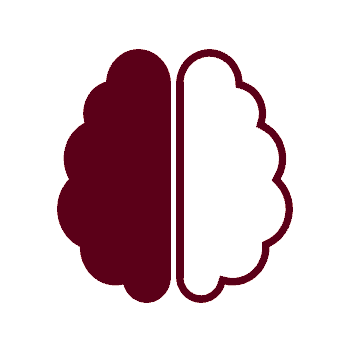For many Chinese learners, they usually start with simplified Chinese because it offers many advantages for acquiring vocabulary more easily. However, you may not know that simplified Chinese evolved from traditional Chinese, and there are many interesting historical contexts between the two. This article will introduce readers to more information about simplified and traditional Chinese.
1. The historical background of Simplified and Traditional Chinese
The historical background of Simplified Chinese and Traditional Chinese characters stems from the evolution of Chinese characters’ writing and the historical development of different regions. In ancient times, Chinese characters evolved from pictograms and ideograms, gradually developing into the forms seen today over time. With the changes in Chinese history, there emerged some degree of variation in the use of characters in different regions, leading to the formation of two different writing forms: Traditional and Simplified Chinese characters.

Traditional Chinese characters originated primarily from the writing traditions of ancient China, maintaining relatively consistent forms in mainland China and other regions over time. The writing of Traditional characters is more complex, preserving the traditional style and aesthetic beauty of ancient Chinese characters, playing an important role in Chinese writing.
On the other hand, Simplified Chinese characters emerged during the Chinese character simplification movement in the early 20th century on the mainland. This movement aimed to improve writing efficiency and literacy rates by simplifying character forms. To achieve this goal, the government implemented a series of Chinese character simplification schemes. These simplification schemes were implemented in 1956 and 1964, simplifying some characters and forming the initial style of Simplified characters. The writing form of Simplified characters is relatively simple and more suitable for mass printing and writing, thus being widely used in mainland China.
2. The current basic differences between the two characters
| Simplified Chinese Characters | Traditional Chinese Characters |
| Fewer strokes | More strokes |
| Simplified forms | More complex forms |
| Mainland China, Southeast Asian countries (Singapore, Malaysia, Vietnam, Thailand, etc.) | Primarily used in Taiwan, Hong Kong, Macau, and some Chinese communities |
Stroke Simplification vs. More Strokes:
Simplified Chinese characters are characterized by stroke simplification, aiming to enhance writing speed and simplify character forms. For instance, the word “电话” (telephone) in Simplified Chinese characters is written as “电话” where the upper part of the character “電” (electricity) is simplified to “电,” reducing the upper part. In contrast, Traditional Chinese characters retain more strokes, resulting in more complex strokes.
Character Simplification vs. More Complex Forms:
Simplified Chinese characters undergo simplification, resulting in shorter and simpler forms. For instance, “醫院” (hospital) becomes “医院,” whereas “醫” (medicine) is simplified to “医.” In contrast, Traditional Chinese characters maintain more complex forms.
Widely Used Regions vs. Limited Usage Regions:
Simplified Chinese characters are predominantly used in mainland China for various purposes such as education, official documents, and media. Official documents, academic papers, textbooks, etc., in mainland China are typically written in Simplified Chinese characters. On the other hand, Traditional Chinese characters are mainly used in regions like Taiwan, Hong Kong, Macau, etc., and find extensive usage in traditional cultural works, religious texts, publications, etc.
3. The Advantages of Simplified Chinese for Beginners
Simplified Chinese characters offer several noticeable advantages for foreigners who are beginners in learning Chinese, primarily evident in the threshold for character recognition and writing proficiency. The threshold for recognizing Simplified characters is relatively lower, making it easier for foreign beginners to grasp. Due to the fewer strokes in Simplified characters, beginners can quickly acquire basic writing skills and understand the character structures. For example, the Simplified character “医院” (hospital) is written as “醫院” in Traditional characters, with “医” simplified compared to “醫,” making it easier for beginners to recognize and write. These characteristics help enhance beginners’ interest and efficiency in learning Chinese.
Simplified characters are accompanied by a phonetic system known as Pinyin, which is based on the Latin alphabet and accurately reflects Chinese pronunciation, for example 医院 (Yīyuàn). For beginners, learning Chinese through Pinyin helps them pronounce accurately and reduces the likelihood of pronunciation errors. The alphabet and pronunciation rules of Pinyin are relatively simple and clear, allowing beginners to quickly grasp basic phonetic knowledge and start writing and reading Chinese using Pinyin.
if you want to convert two characters, you can visit this website
Conclusion:
In the realm of Chinese language learning, PinyinTube emerged as a game-changer, offering a dynamic blend of technology and pedagogy. Its innovative features, seamless integration with streaming platforms, and user-centric design position it as the most effective learning platform for aspiring linguists. Whether you’re a beginner embarking on your language-learning journey or an advanced learner seeking to refine your skills, PinyinTube promises unparalleled support and guidance every step of the way. You can add it to your Chrome here.

The best way to learn a language is by imitation. So with PinyinTube, you can enjoy your favorite movie while learning any language.
This instruction video shows how to add PinyinTube to your Chrome extensions.



